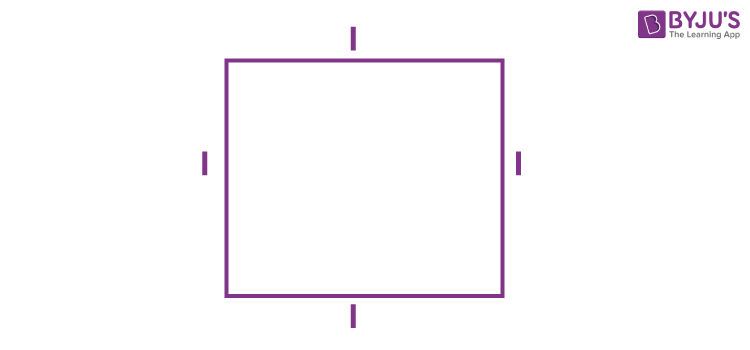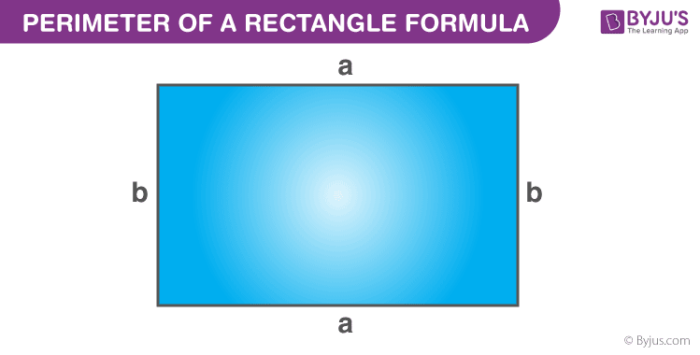Use of Variables in Common Rules: This part of algebra in Class 6 explained the use of variables in geometry and arithmetic. The rules from both geometry and arithmetic for using variables are provided here with examples.
Check: Variables And Constants In Algebraic Expressions
What are Variables?
In Mathematics, a variable is an alphabetical term that is used to represent an unknown quantity. Variables are an important part of Algebra. Both small letters and capital letters of alphabets can be used to represent the variables.
The most common applications of variables are:
Examples of Variables are:
- 3 + x = 2
- X = 3
- (a+b)² = a² + b² + 2ab
Use of Variables in Geometry
In geometry, we learn about the perimeter of a square and rectangle. Let us use the variables here to represent the perimeters for both the shapes.
Perimeter of Square Rule
Suppose a square that has sides equal to the ‘l’ unit. Here, ‘l’ is a variable.

Now by the definition of perimeter, we know that, perimeter of a square is equal to the sum of all the sides. A square has all its four sides equal in length. Therefore,
Perimeter of square = l + l + l + l = 4l
Now, for any value of l, we can find the perimeter of a square. Thus, the use of variable ‘l’, allows use of the perimeter rule in a general way.
For example, the length of the side of a square is 5cm.
Therefore, the perimeter of square = 4l = 4 x 5 = 20 cms
Perimeter of Rectangle Rule
A rectangle is a polygon that has opposite sides equal. Therefore, for the opposite sides we can take the same variable.
Let the length of the opposite sides be a and b, respectively.

Now, by the definition of perimeter, the formula will be:
Perimeter = Sum of all sides
P = a + b + a + b
P = 2a + 2b
P = 2(a+b)
Here, both a and b are variables. Both the variables are independent of each other. It means the value of a is not dependent on the value of b.
Example: Find the perimeter of a rectangle, with length = 4 cm and width = 3 cm.
Let length of the rectangle, a = 4 cm
width of a rectangle, b = 3cm
Hence,
Perimeter of rectangle = 2 (a + b)
= 2 (4 + 3)
= 2 (7)
= 14 cms
Use of Variables in Arithmetic
Likewise, in arithmetic, the variables have a significant role to represent the unknown values or to describe a property. The three properties explained under use of variables are:
- Commutative property of addition of two numbers
- Commutative property of multiplication of two numbers
- Distributive property
Commutativity of addition of two variables
When we add two numbers together, then the resultant value is equal to the value when the order of the numbers are changed. Commuting means interchanging. Now, if we use the variables for the two numbers as ‘a’ and ‘b’, then it will generalise the property. Hence,
a + b = b + a
Where, a and b are the variables that can take any value.
Example: If a = 10 and b = 2, then,
10 + 2 = 2 + 10 (=12)
Commutativity of multiplication of two variables
When two numbers are multiplied together, then the change of order of numbers, does not change the result of the product. Thus, here also we can generalise the property of commuting numbers in multiplication.
Again using the variables ‘a’ and ‘b’, we can represent the general property of commutativity of multiplication.
a × b = b × a
Where a and b can take any value.
Example: Suppose if a = 4 and b = 8, then;
4 x 8 = 8 x 4 (=32)
Distributivity of numbers
Let us assume that, we have to find the value of 3 x 90. Now, we can write this product form as:
3 x 90 = 3 x (80 + 10) = 3 x 80 + 3 x 10 = 240 + 30 = 270
Also, if we directly multiply 3 by 90, then the value is equal to 270.
Thus, the above rule is applicable to any three numbers.
So, we can generalise the above rule by using three variables say, a, b and c and express it as:
a × (b + c) = a × b + a × c
Where a, b and c can be any three numbers.
Example: If a = 2, b = 5 and c = 10, then;
2 x (5 + 10) = 2 x 5 + 2 x 10 (=30)
Practice QuestionsQ.1: What is the perimeter of a square, if the length of its side is 7cm? Q.2: The side of a regular pentagon is denoted by variable ‘a’, then what is the perimeter of the pentagon? [hint: a regular pentagon has five equal sides] Q.3: Find the radius of the circle whose diameter is d. |
Frequently Asked Questions on Use of Variables
Why do we use variables in Maths?
Variables are used in Mathematics to represent an unknown value or unknown quantity.
What is the general rule to use variables in geometry?
In geometry, variables are used to represent the formulas of the perimeter of a shape, such as square or rectangle.
What is the use of variables in arithmetic?
The variables are used in arithmetic to express the properties of commutativity, associativity and distributive property.
Give examples of the use of variables in the perimeter of regular hexagons.
A regular hexagon has all its sides equal. So, let the length of the side be ‘l’. Therefore, the perimeter of a regular hexagon will be:
P = l+l+l+l+l+l
P = 6l
Where l is a variable that can take any value.
Comments